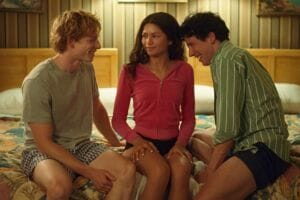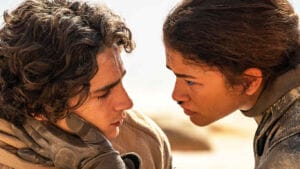How does one begin to write about one of the most long-awaited sequels in cinema history? Not with narrative detail. Director Denis Villeneuve delivered a personal message to critics before our screening, including a long list of plot points that he asked us not to refer to. There will be no spoilers here, so Denis has no need to add my name to a list—unless he anticipates us all thinking that “Blade Runner 2049” is a masterpiece.
1982’s “Blade Runner” is one of the most influential sci-fi movies of all time, and in the interest of immediate controversy: it’s also one of the most overrated. It’s a great film, but it works more as a template for better films than it does as a self-contained revelation. It’s undeniably a masterwork of tone and visual design, but it doesn’t explore existential questions so much as it raises them.
“Blade Runner 2049”, arriving on the dystopian scene 35 years later, digs deeper than its predecessor—but it fails to gel together into any driving idea.
It captures the spirit of the original where it matters most: tone and visual design. There couldn’t have been a more apt choice for director than Villeneuve: his oeuvre is suffused with tinges of noir, stimulating metaphysics, and staunch humorlessness—hallmarks of the “Blade Runner” brand. Villeneuve’s sensibilities and the original’s tone meld flawlessly, translating into a film that feels like a true continuation.
Thanks to 35 years of technological development, the film bests its predecessor in the visual smorgasbord department. Every location—from an advanced but crumbling Los Angeles, to its dusty radioactive outskirts—is a veritable feast of cinematography and set design, garnished with effects work that would impress audiences 35 years from now. With Roger Deakins (the greatest living cinematographer) at their side and a haunting Zimmer score behind them, Villeneuve and his production design team polish your eyeballs and help you peer into a peerless world.
Select performances are similarly top-notch. Ryan Gosling puts some of his best work on display, internalizing the hardest questions that “Blade Runner 2049” wants us to wrestle with. Harrison Ford tricks us into thinking he’s here for anything more than a paycheck (his response to an interview question about reprising the role was “it’s a living”) with a seemingly invested return as Deckard.
Jared Leto is the outlier among the main roles: the blind Replicant creator (get it?) is a ridiculous character. His god complex, banal Biblical allusions, and tendency to over-exposit the film’s themes wear on the nerves.
The movie really belongs to its female supporting characters. Four of its key women were drawn from niche corners of indie and foreign cinema, and their expertise stuns even in small doses. Ana de Armas and Carla Juri are particularly breathtaking performers: they emanate warmth and tangible tenderness, respectively, that the frequently cold film needs.
“Blade Runner 2049” doesn’t justify its over two-and-a-half-hour runtime, but the screenplay does a good job filling it with contemplations of the nature of the soul. The original’s misstep in such a venture was how human the Replicants were: they rarely seemed lesser than a soulfully equivalent species. The sequel adds numerous shades of grey to the man/machine dynamic, allowing for actual explorations into the abstract differences between them.
These mostly come in vignettes; in standalone scenes that gaze mournfully into the vagaries of identity and memory. The sequel’s additional nuance instills these scenes with emotional and intellectual depth: an early moment on a rooftop in the rain surpasses Roy Batty’s monologue from the original in effectiveness.
But “Blade Runner 2049” has trouble building anything cohesive out of these episodes. Its philosophy is intermittent, bogged down by overlong action sequences and heavy-handed narrative choices—giving predictable reveals too much weight and an astounding amount of plot conveniences, for example.
The film’s fragmented grasps at direction are still worthwhile, and it finds bravery in the deconstruction of a common hero trope. A central character of “Blade Runner 2049” is trapped in an oscillation between what he might be and what he wants to be, and that conflict is compellingly human—and distinctly “Blade Runner”.
★★★½ (3.5/5)



